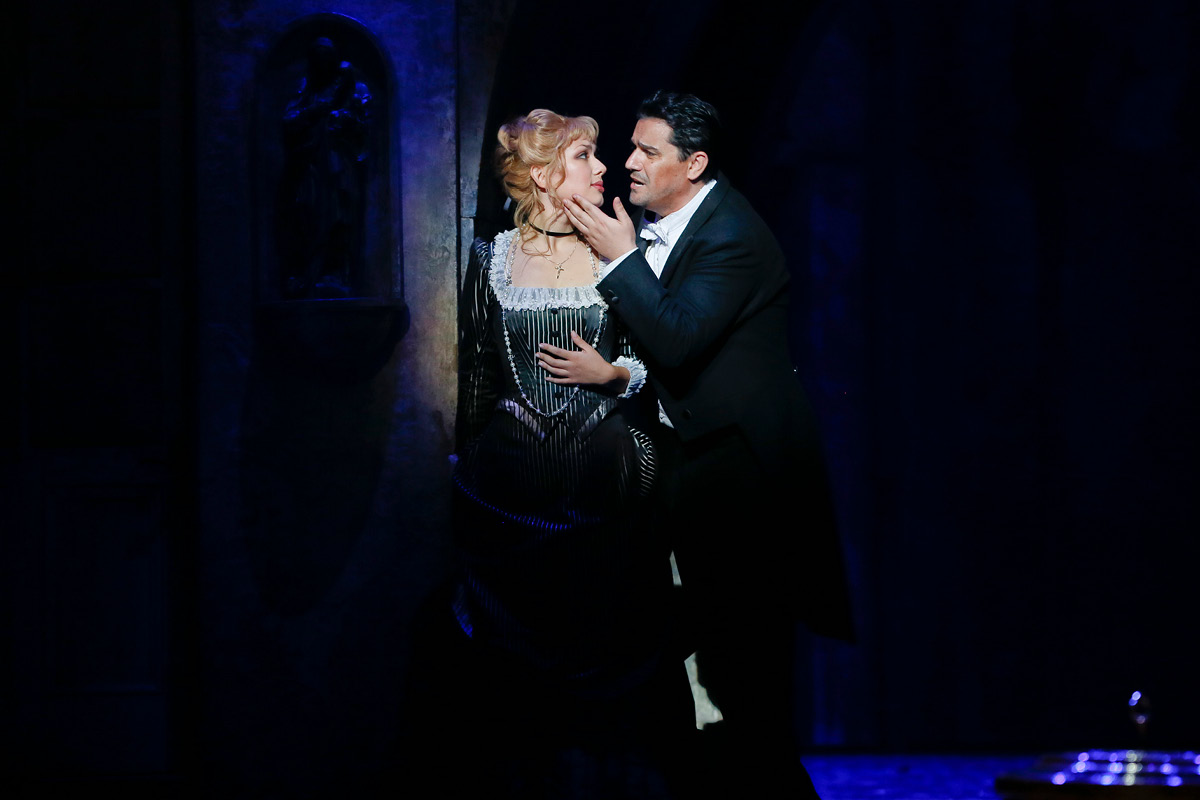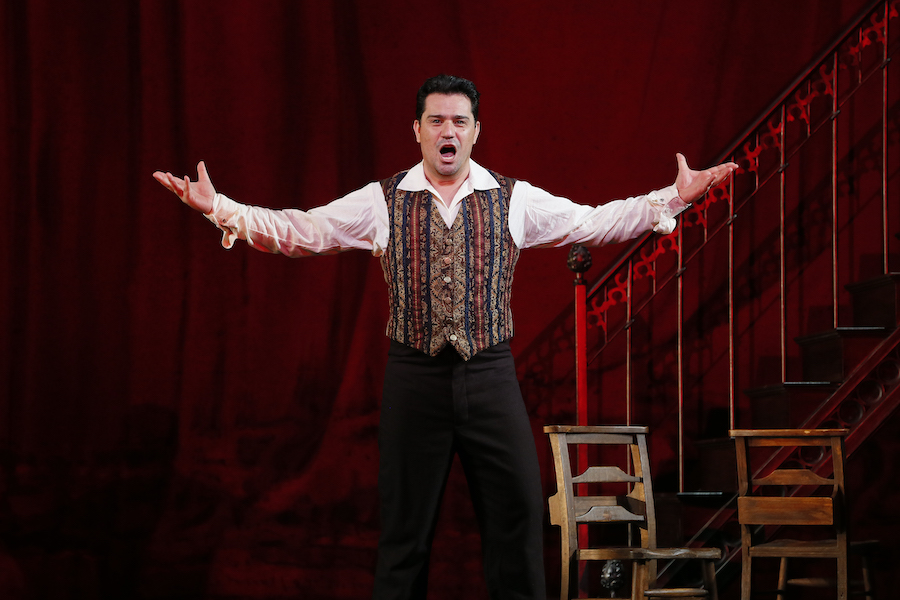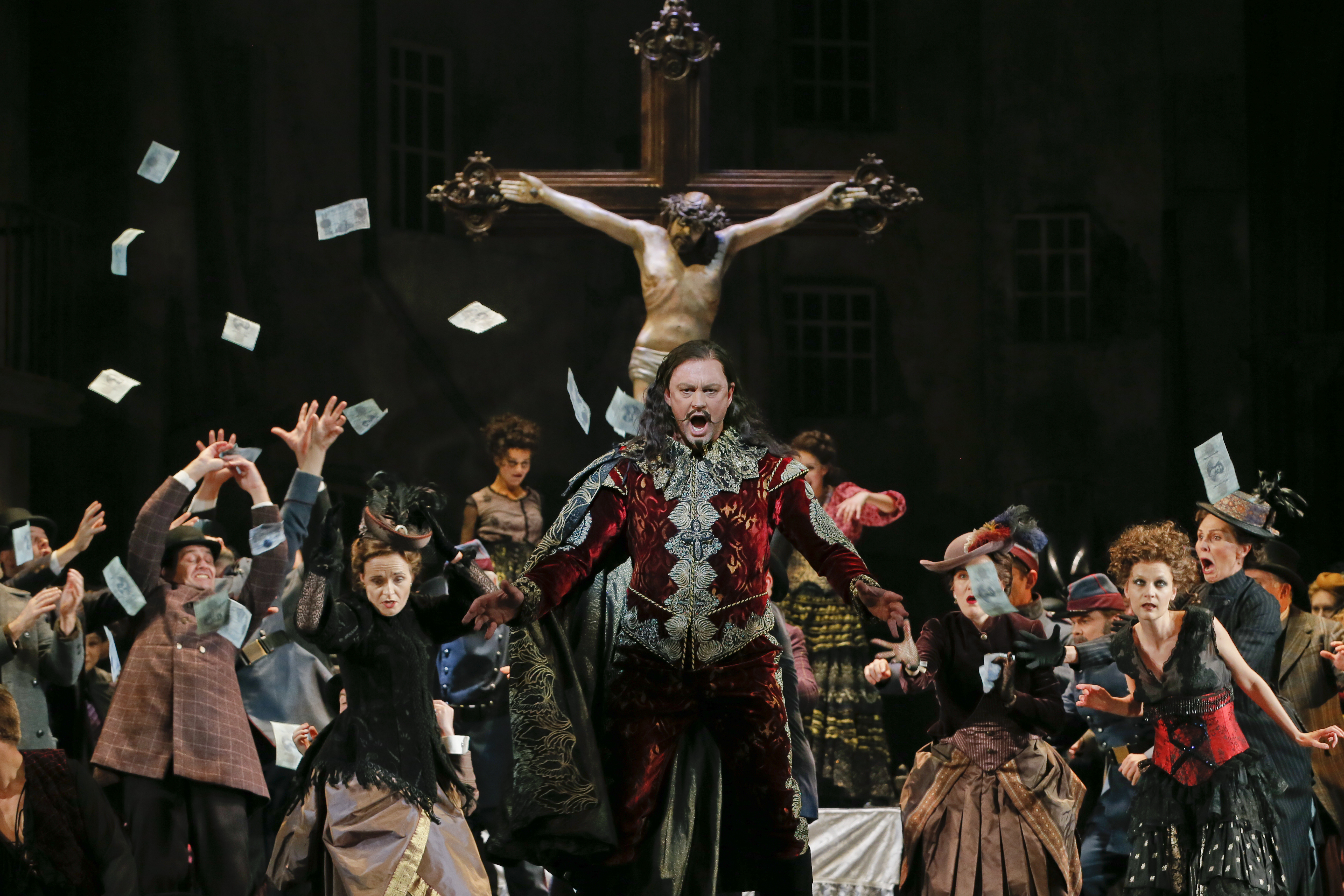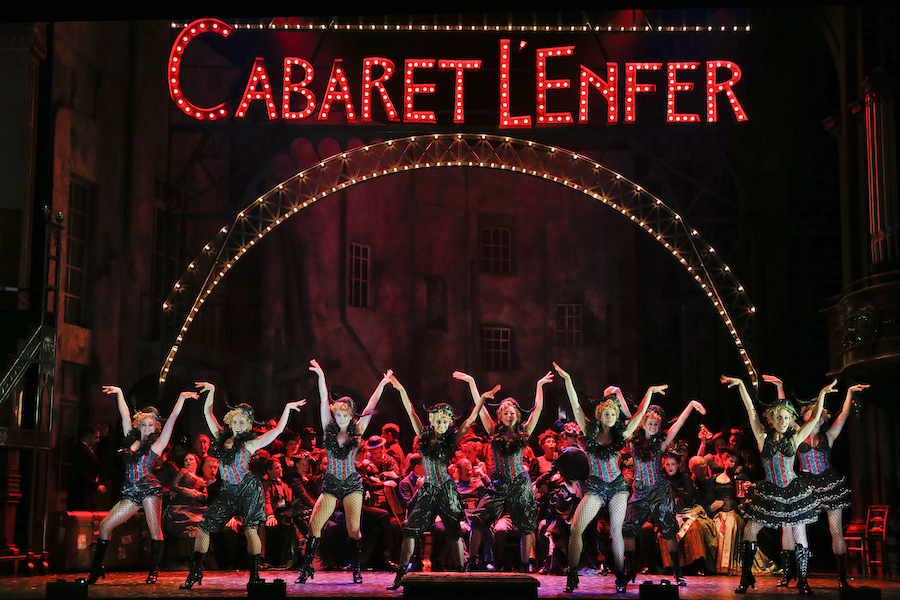Opera Australia wraps up 2019 in grand style with Charles Gounod’s grand opera, so rarely seen in Australia lately. It’s sung by a uniformly excellent cast, including two outstanding imports and local favourite Teddy Tahu Rhodes in devilishly good form, and Sir David McVicar’s lavish, ostensibly traditional production is packed with provocative surprises.
 Maria Mudryak and Saimir Pirgu in Opera Australia’s Faust. Photo © Jeff Busby
Maria Mudryak and Saimir Pirgu in Opera Australia’s Faust. Photo © Jeff Busby
Premiering in Paris in 1859, Faust tells the centuries-old tale, told by Goethe among others, of the eponymous man who makes a pact with Satan for a chance at youthful hedonism. In Gounod’s opera, Faust falls in love with Marguerite. As her brother, Valentin, goes to war and her young admirer, Siébel, looks on despairingly, this innocent woman is seduced, impregnated and abandoned by Faust, aided by the devil incarnate, Méphistophélès. As Marguerite faces execution for infanticide, her soul becomes the battleground between good and evil, but the remorseful Faust’s fate is sealed.
Other than excessive cane-wobbling as the elderly Faust, Albanian Saimir Pirgu is all that one could wish for in the title role. By turns eager, charming and remorseful, his character’s evolving feelings are clear both dramatically and vocally. His tenor is full of romantic expression, with considerable power that melts away beautifully. Kazak soprano Maria Mudryak’s performance is all the more remarkable given her petiteness and mere 25 years of age. Believable throughout Marguerite’s dramatic changes of circumstance, she sings with lustrous tone and lovely diction, most notably in the showcase Jewel Song.
 Saimir Pirguin Opera Australia’s Faust. Photo © Jeff Busby
Saimir Pirguin Opera Australia’s Faust. Photo © Jeff Busby
Tall bass-baritone Rhodes has never lacked impact on stage, but is utterly in his element as a dashing, malevolent Méphistophélès. His voice is a perfect fit for the role’s tessitura. On opening night he displayed effortless vocal power that filled the huge State Theatre, and a dark, burnished tone reminiscent of mahogany. I’ve heard Rhodes sing many times over many years, but can’t recall him sounding better.
The three principals delight individually and in various duets, nearly raising the roof with the finale’s trio, but the supporting cast are also very satisfying. Baritone Luke Gabbedy makes Valentin’s Act IV aria a performance highlight, while Anna Dowsley in the trouser role of Siébel and Dominica Matthews as Marguerite’s lusty neighbour are spot on. The Opera Australia Chorus raise their already high bar, especially the men, from their rousing Soldiers’ Chorus to a pianissimo response to Valentin’s death. Numerous dancers also make a big impact. Performing Michael Keegan-Dolan’s lively, subversive choreography, they play Méphistophélès’ lithe minions and also perform the ballet sequence rarely included in modern productions of Faust.
 Teddy Tahu Rhodes in Opera Australia’s Faust. Photo © Jeff Busby
Teddy Tahu Rhodes in Opera Australia’s Faust. Photo © Jeff Busby
After some briefly wobbly brass in the opening minutes, Orchestra Victoria quickly hit their stride under the baton of Guillaume Tourniaire. With the pit at full capacity, they expressed the romance of Gounod’s music to the full, including by sensitively dialing the volume right back to allow a poignant voice or exquisite violin solo to capture the audience’s collective heart.
Making its debut in London in 2004 before a well-received outing for Opera Australia in Sydney three years ago, McVicar’s production sets the action in Paris during the Second Empire’s dying days. It has some oddities, including the historically and grammatically incorrect big Cabaret L’Enfer sign, and the tempting casket of jewels’ placement well away from Marguerite’s door, but they are almost insignificant in the context of this production’s overall intelligence and impact.
Bourgeois morality and decadence are on equal display, as are the heroic start and dismal end of the Franco-Prussian War. Turning the street scene of Faust and Marguerite first encounter into a decadent Paris cabaret complete with can-can dancers, and the revival of the ballet sequence, are masterstrokes. The latter is an absinthe-fuelled vision in which traditionally costumed ballerinas squeal (yes, they vocalise!) in judgement of a tattered metaphorical Marguerite, while posh gents leer at them before eventually rushing the stage to vigorously indulge their lust.
 Dancers in Opera Australia’s Faust. Photo © Jeff Busby
Dancers in Opera Australia’s Faust. Photo © Jeff Busby
Charles Edwards’ set incorporates soaring, detailed architectural elements of a church, a theatre and the street, cleverly adjusting it with additional elements through the five acts’ various locations. Paule Constable’s atmospheric lighting suggests grim gaslight and the tawdry brilliance of early electric light. Evoking 1870 Paris with luxurious abundance and detail, Brigitte Reiffenstuel’s costumes maintain the production’s overall palette or subdued hues with rich flashes of red and gold.
Of particular note are her various guises for Méphistophélès, who is presented not so much as the usual demonic sorcerer as a showman-meets-conman. Among his looks are a Musketeer turned bad, a scruffy soldier, Christ in a stunning living-statue coup de théâtre, and an even more surprising Act V transformation that is best kept secret. Suffice to say it again subverts this opera’s moral conservatism.
Musically outstanding and a theatrical triumph, this Faust is easily among the best opera experiences in Melbourne this year.
Faust is at the State Theatre, Melbourne, until December 7











Comments
Log in to join the conversation.